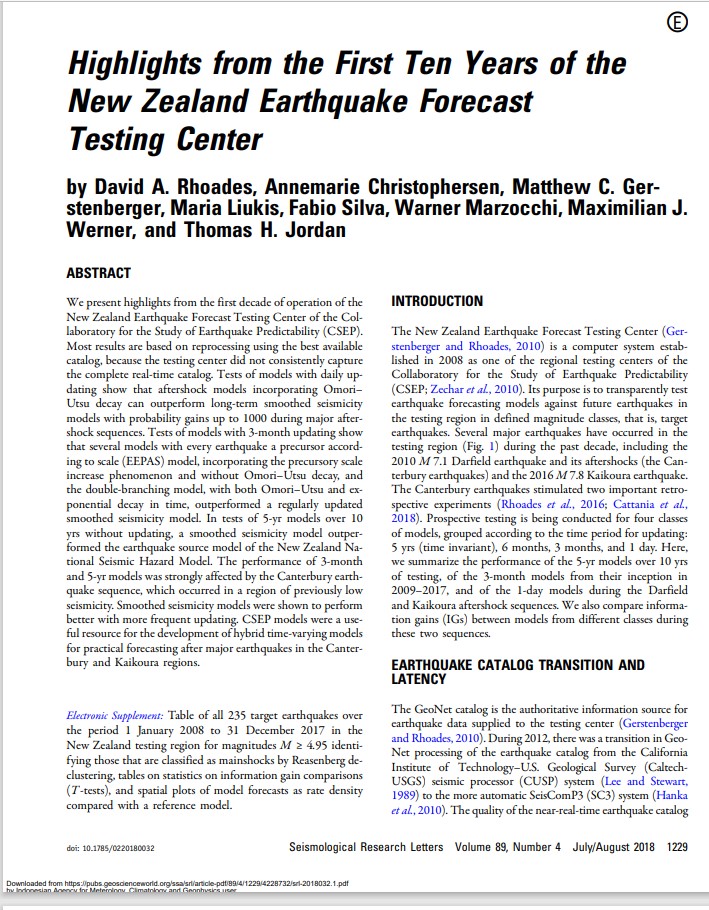We present highlights from the first decade of operation of the New Zealand Earthquake Forecast Testing Center of the Collaboratory for the Study of Earthquake Predictability (CSEP). Most results are based on reprocessing using the best available catalog, because the testing center did not consistently capture the complete real-time catalog. Tests of models with daily updating show that aftershock models incorporating Omori– Utsu decay can outperform long-term smoothed seismicity models with probability gains up to 1000 during major aftershock sequences. Tests of models with 3-month updating show that several models with every earthquake a precursor according to scale (EEPAS) model, incorporating the precursory scale increase phenomenon and without Omori–Utsu decay, and the double-branching model, with both Omori–Utsu and exponential decay in time, outperformed a regularly updated smoothed seismicity model. In tests of 5-yr models over 10 yrs without updating, a smoothed seismicity model outperformed the earthquake source model of the New Zealand National Seismic Hazard Model. The performance of 3-month and 5-yr models was strongly affected by the Canterbury earthquake sequence, which occurred in a region of previously low seismicity. Smoothed seismicity models were shown to perform better with more frequent updating. CSEP models were a useful resource for the development of hybrid time-varying models for practical forecasting after major earthquakes in the Canterbury and Kaikoura regions.
5
Highlights from the First Ten Years of the New Zealand Earthquake Forecast Testing Center
David A. Rhoades, Annemarie Christophersen, Matthew C. Gerstenberger
Penerbit :
Seismological Research Letters
Tahun :
2018
epaper
Geofisika
-
No Scan-
-
No Klasifikasi-
-
ISBN-
-
ISSN-
-
No Registrasi-
-
Lokasi TerbitUSA
-
Jumlah Hal9
-
Label-
-
Versi DigitalTIDAK
-
Versi FisikTIDAK
-
Lokasi Rak Buku Fisik//
-
Jumlah Exemplar Fisik Tersedia-




